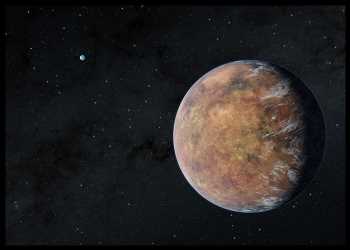NASA Scientists Discover Earth-Size Planet

Using data from Transiting Exoplanet Survey Satellite, NASA’s scientists have discovered a new Earth-size planet, called TOI 700 e.
It is orbiting within the habitable zone of its star – the range of distances where liquid water could occur on a planet’s surface.
The new world is 95 percent the size of Earth and likely rocky, according to NASA.
Astronomers previously discovered three planets in this system, called TOI 700 b, c, and d. Planet d also orbits in the habitable zone. But scientists needed an additional year of TESS observations to discover TOI 700 e.
“This is one of only a few systems with multiple, small, habitable-zone planets that we know of,” said Emily Gilbert, a postdoctoral fellow at NASA’s Jet Propulsion Laboratory in Southern California who led the work. “That makes the TOI 700 system an exciting prospect for additional follow up. Planet e is about 10% smaller than planet d, so the system also shows how additional TESS observations help us find smaller and smaller worlds,” he added.
Gilbert presented the result on behalf of her team at a meeting of the American Astronomical Society in Seattle. A paper about the newly discovered planet was accepted by The Astrophysical Journal Letters.
Follow-up study of the TOI 700 system with space- and ground-based observatories is ongoing, and may yield further insights into this rare system, Gilbert said.
TOI 700 is a small, cool M dwarf star located around 100 light-years away in the southern constellation Dorado. In 2020, Gilbert and others announced the discovery of the Earth-size, habitable-zone planet d, which is on a 37-day orbit, along with two other worlds.
The innermost planet, TOI 700 b, is about 90% Earth’s size and orbits the star every 10 days. TOI 700 c is over 2.5 times bigger than Earth and completes an orbit every 16 days. The planets are probably tidally locked, which means, they spin only once per orbit such that one side always faces the star, just as one side of the Moon is always turned toward Earth.
Finding other systems with Earth-size planets in this region helps planetary scientists learn more about the history of the solar system.
Source: Read Full Article
